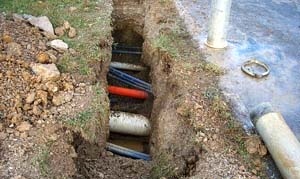How We Locate Underground Utilities
We've got you covered.
Posted 05:30 July 18, 2025
Last Updated 05:30 July 18, 2025
 As a hydrovac company, locating buried utilities is a critical service that leverages the precision and safety of hydrovac trucks to protect underground infrastructure while ensuring project efficiency. The process begins with a thorough pre-excavation assessment, combining advanced technology and industry-standard protocols to identify the location of utilities like gas lines, water pipes, and fiber optic cables. Hydrovac trucks, equipped with high-pressure water jets and powerful vacuum systems, play a central role in this process by enabling non-destructive excavation methods, such as daylighting and potholing, to safely expose utilities for verification. This approach minimizes the risk of costly utility strikes, which caused over 160,000 incidents in the U.S. in 2022, and ensures compliance with regulations mandating careful digging near marked utilities.
As a hydrovac company, locating buried utilities is a critical service that leverages the precision and safety of hydrovac trucks to protect underground infrastructure while ensuring project efficiency. The process begins with a thorough pre-excavation assessment, combining advanced technology and industry-standard protocols to identify the location of utilities like gas lines, water pipes, and fiber optic cables. Hydrovac trucks, equipped with high-pressure water jets and powerful vacuum systems, play a central role in this process by enabling non-destructive excavation methods, such as daylighting and potholing, to safely expose utilities for verification. This approach minimizes the risk of costly utility strikes, which caused over 160,000 incidents in the U.S. in 2022, and ensures compliance with regulations mandating careful digging near marked utilities.
The first step in locating buried utilities involves gathering existing data and coordinating with utility companies through services like 811, the national “Call Before You Dig” hotline. This service provides approximate locations of underground utilities based on utility maps, but these are often inaccurate due to outdated records or unmarked lines. As a hydrovac company, we supplement this information with advanced tools like ground-penetrating radar (GPR) and electromagnetic locators to refine the estimated positions of utilities. GPR uses radio waves to detect subsurface anomalies, while electromagnetic locators trace signals from conductive utilities like metal pipes or cables. These technologies help us create a preliminary map of potential utility locations, guiding where hydrovac trucks will focus their efforts to avoid unnecessary digging.
Once potential utility locations are identified, hydrovac trucks are deployed for daylighting, the process of carefully exposing buried utilities to confirm their precise depth, position, and condition. The hydrovac truck’s high-pressure water jet, adjustable for different soil types, breaks up the ground into a slurry, which the vacuum system then removes into a sealed debris tank. This non-destructive method ensures that utilities are exposed without the risk of damage from mechanical tools like backhoes, which can cost upwards of $100,000 per strike to repair. In urban areas with dense infrastructure, hydrovac trucks are particularly valuable, as their precision allows us to work within tight tolerances—often mandated to be within 18 inches of marked utilities—ensuring safety and regulatory compliance.
Hydrovac trucks also enable potholing, a targeted excavation technique that creates small, precise holes to verify utility locations. This is especially useful when maps or locator tools provide conflicting data. By using hydrovac trucks, we can expose utilities with minimal surface disruption, preserving surrounding soil and reducing restoration costs. The vacuum system keeps the worksite clean, containing debris and preventing environmental contamination, which is critical in sensitive areas or when handling hazardous materials. Some hydrovac trucks in our fleet incorporate heated water systems to tackle challenging soils, such as frozen ground or dense clay, ensuring year-round reliability in locating utilities.
The integration of hydrovac trucks with advanced locating technologies enhances efficiency and accuracy, saving clients time and money. By confirming utility locations before major excavation, we prevent delays and costly repairs, aligning with the growing demand for hydrovac services—projected to reach a $1.5 billion market for hydrovac trucks by the end of 2025. Our hydrovac company’s expertise in combining GPR, electromagnetic tracing, and hydrovac excavation ensures that buried utilities are located safely and precisely, protecting infrastructure, meeting regulatory standards, and supporting sustainable project outcomes in increasingly complex urban environments.
If you'd like to discuss an upcoming excavation project, contact us here at Hole Hogz. We service Las Vegas, Henderson, Boulder City, and most parts of Clark County Nevada.
